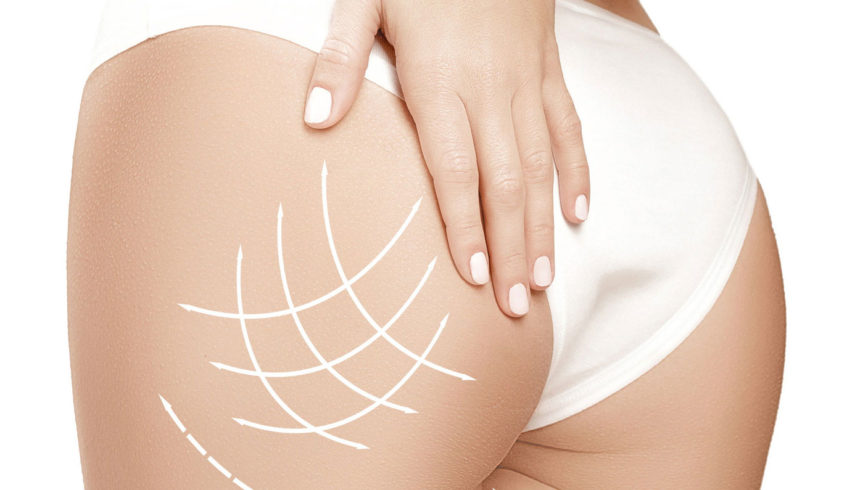What are cellulites? The answer may be linked the fact there are different types of cellulite in the same person; for example, a mixed cellulite, one that is hard in some areas and oedematous or soft in others.
What are cellulites: What is cellulite?
Deposits of adipose tissue that assume an “orange peel” appearance are improperly called cellulite.
Cellulite can, however, be classified:
- Soft or flaccid
- Edematous
- Hard or compact
- Fibrous
What are cellulites: Soft cellulite
Soft or flaccid cellulite affects:
- tissue devoid of tone
- those whose weight fluctuates
It has the typical “orange peel” appearance, both at rest and in motion.
Soft cellulite
This is certainly the most common type. Indeed, soft (or flaccid) cellulite affects many more individuals and has the characteristic of appearing in several areas of the body, although on the pelvis and thighs in particular. The shape of the silhouette changes due to water retention. If palpated lightly, the orange peel effect and swelling of tissues can be felt; on deeper palpation, nodules can be felt. It may occur in people of normal weight but is more common in obese individuals.
What are cellulites: Edematous cellulite
Edematous cellulite is formed due to localised water retention in:
- Buttocks
- Pelvis
Edematous cellulite:
- Has a swollen and spongy appearance
- Is painful
- Mainly affects the thighs where there is swelling or oedema
The appearance of this cellulite is:
- Sagging when standing
- Oscillating with movement
Specific physical exercise is very useful.
Edematous cellulite
Edematous cellulite is the most difficult to treat, and is characterised by the fact that there is an increased amount of fluid in the tissues. It can also be painful in this case and the areas in which it is most concentrated are the buttocks, pelvis, ankles and feet. The appearance is spongy and swollen and presents the classic orange peel effect.
What are cellulites: Hard or compact cellulite
Hard or compact cellulite:
- Is the most common
- Affects individuals who are in good physical shape with toned muscles
- Is located in areas with stretch marks
- Is localised on the knees, thighs and buttocks
- Is associated with disorders of the venous or lymphatic microcirculation
Compact cellulite
Compact or hard cellulite appears both in individuals who are overweight or obese and in those who are in good physical shape. Its appearance is not very mobile, because the skin adheres to the muscle tissue and is thicker. It is not easy to squeeze the affected part in your hands, because it is taut and compact, can present stretch marks and be painful both on palpation of the area and without palpation.
The famous orange peel effect can be noted only if the affected area is pressed between the hands.
What are cellulites: Fibrous cellulite
Fibrous cellulite:
- Is located at the level of the hypodermis and dermis
- Forms due to fluid stagnation
- Has a fibrous structure
Fibrous cellulite
Fibrous cellulite is formed in particular by an increase in connective tissue, and the skin becomes hard to the touch, with the presence of many nodules that create the famous orange peel skin.
What are cellulites: 4 stages of cellulite
There are 4 stages of cellulite: the parameters used to recognise it are:
- Initial poor venous and lymphatic circulation
- Stagnation of fluids locally
1. Congestive stage
as evidenced by:
- Venous and lymphatic stasis
- Poor oxygenation of tissues
- Reduced drainage of interstitial fluids
- Interstitial oedema
- Increase in the volume of fat molecules
- Visible appearance of “orange peel” skin
The symptoms are:
- Heavy thighs
- Less elastic and colder skin
- Pain if the part is pinched
- Its appearance is “orange peel skin”
- Broken capillaries in the affected area
2. Exudative stage
The skin becomes:
- Fragile and dehydrated
- Increase in inflammatory process
- Pain
- Vascular dilatation
- Swelling pushes the connective fibres towards the surface of the epidermis
The symptoms are:
- The formation of annoying fat pads
- Sagging skin and a very visible orange peel effect
- Telangectasia in the affected area
3. Fibrous stage
presents itself with:
- Altered cell metabolism
- Blockage of lymphatic circulation
- Formation of nodules
- Degeneration of collagen in the dermis and hypodermis
The symptoms are:
- Cold skin
- Varicose veins
- Flaccidity
- Stretch marks in the affected area
4. Cicatricial fibrosis
leading to:
- Compression of blood vessels and nerves
- Sclerosis that traps wastes, nutrients, stagnant fluids, water and fat
- Increase in skin volume
- Skin hypothermia
- Stretch marks
- Teleangiectasia
- Heaviness
The symptoms are:
- “Mattress” skin, resembling a quilt
- Hard, deep and painless nodules
What are cellulites. Risk factors
Let’s take a look at the major risk factors:
- Venous and lymphatic stasis
- Fluid stagnation in the dermis
- Interstitial oedema
- Collagen and elastin degeneration
- Changes in lymphatic circulation
- Changes in metabolic slowdown
- Accumulation of adipose cells
- Accumulation of waste
Lifestyle and factors that can increase the risk and worsen the appearance include:
- Sedentary lifestyle
- Smoking
- Weight gain
- Oestrogen-based contraceptive pills, some drugs, hormonal factors
- Blood circulation
- Lack of sleep
- Stress
What are cellulites and how to improve the appearance of cellulite.
Suggestions include:
- Antioxidants with the diet or with supplements
- Drinking plenty of water
- Losing weight
- Sport
- A good diet
Treatments:
Aesthetic surgery methods (not specific for treating cellulite, but for localised adipose deposits)
- Liposuction
- Liposculpture
Non-invasive aesthetic medical treatments, such as:
- Cavitation
- Ultrasound
- Radiofrequency
- Electrolipolysis
- Cryosculpting
- Laser therapy
- Pressotherapy
- Lymphatic drainage
What are cellulites? Cellulite and localised adiposity should be followed by a specialist doctor who can help to find the best solution while respecting personal expectations and on the basis of the individual’s state of health.


